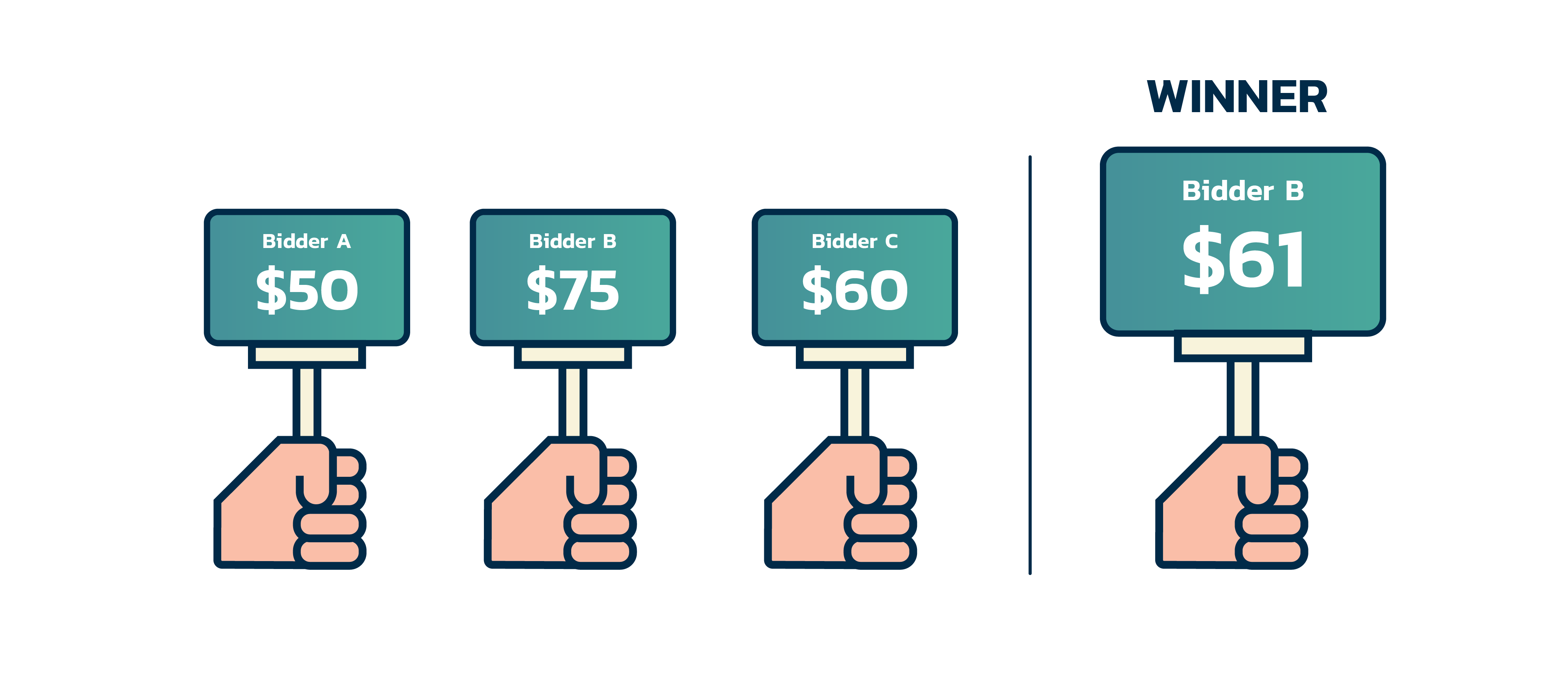In this article, we explain what biddable ads are, and what types of promotion options are available on Provi’s marketplace.
There are two ways to BUY ads to promote your products on Provi: fixed and biddable. This article will explain everything you need to know regarding fixed and biddable ads.
What Are Fixed Ads?
Fixed ads on the Provi marketplace are purchased at a flat rate and reserved in two-week flights. This model is utilized for display banner placements on Provi such as the homepage marquee banner, order confirmation page and retailer list pages.
What Are Biddable Ads?
Biddable advertising is an auction-based system that allows advertisers to set total budgets and maximum bids to win impressions and clicks on their ads. Pricing is dynamic so advertisers never pay more than what the market demands.
For example, a beverage alcohol supplier, Supplier A, is looking to advertise their products on Provi. They want their product to appear each time a buyer searches for “beer.” Supplier A is willing to pay up to $15 for each click on that placement, with a max budget of $5,000 for the campaign. Supplier A wins the bid at $12/per click, resulting in a $12 cost per click (CPC). If/when other suppliers enter the auction with a higher bid, Supplier A’s campaign will automatically bid more aggressively up to the $15 cap. The campaign will continue to spend until it exhausts the total budget, or reaches the predetermined campaign end date.
Here are some of the reasons brands invest in biddable ads:
- Sales Growth. Increase sales by securing prime digital shelf space and being seen by more customers
- Category Share. Secure better placements than your competitors, be seen first when customers are browsing or searching for a certain category or item
- Generate Trial. When an item is one of the first search results or is in clear view, buyers may be more inclined to try it out for the first time
- Brand Awareness. Raise brand awareness by being in the consumer’s line of sight, and therefore top of mind.
How Does It Work?
Provi has partnered with Carrot Ad to power biddable ads on our marketplace.
All biddable ad campaign creation, optimization and execution is managed through ads.instacart.com. When a Provi retailer lands on a page that should have a biddable ad displayed (i.e. a search page or a category page), our website makes an ad call to Carrot Ad to determine which ad won the bid and should be shown to Provi retailers. That winning ad then fills the spot on the page.
Provi uses a second-price auction system for sponsored product ads to provide maximum value to our brand partners. A second-price auction means you only ever pay $0.01 more than the next highest bidder, preventing you from overpaying the market value.

For information on second-price auctions, check out the article How Second-Price Auctions Work.
Biddable Ad Types on Provi
Several types of biddable ad placements are available on the Provi marketplace: sponsored product placements and display banner placements.
Sponsored Product Placements
A Sponsored Product Placement is a type of ad on the Provi marketplace which brands use to promote relevant products to consumers based on search and browsing behavior. On Provi, there are two types of sponsored product placements — search & category.
Provi uses a cost-per-click (CPC) payment model which means when consumers click on a suppliers ad, the supplier is charged a fee. How much they are charged depends on the result of the auction our system runs each time a placement is displayed to a consumer — but they’ll never be charged more than the maximum bid set.
Display Banner Placements
Biddable display banners drive awareness of a brand with incremental impressions on heavily viewed pages.
For biddable display banners, Provi uses a cost-per-mille (CPM) payment model which is the measured cost that one will pay when their ad is shown per thousand impressions. On Provi, the minimum cost per impression is $0.55, or $550 CPM. How much a brand is actually charged depends on the result of the auction our system runs each time a placement is displayed to a consumer — but a brand will never be charged more than the maximum bid set.
For more details on biddable ad placements on Provi, check out the article Where Do My Ads Show?
Measuring success
Advertisers get real-time access to key metrics to indicate how campaigns, placements, products and search terms are performing. Some key metrics you’ll have access to - impressions, clicks, average CTR, ROAS, attributed sales and average CPC.
Terms to know
Budget: The maximum amount of money spent on an advertising campaign.
Bid: The amount a brand is willing to pay to have shoppers click on its ad placement.
Cost-per-click (CPC): The average cost paid each time someone clicks an ad. This number is calculated by dividing the amount of money spent on an ad divided by the number of clicks it received. Sponsored Placement Ads are examples of cost-per-click ads, so a brand only pays when its ad receives clicks.
Click-through rate (CTR): The percentage of ad impressions that are clicked as compared to the entire number of impressions. The standard calculation for CTR is (clicks/impressions) x 100.
Conversions: An action that a customer completes; this phrase can be used to refer to any number of actions, including clicking “Add to Cart,” completing a purchase, etc.
Impressions: The number of times an ad was rendered on a page or device.
Reach: The total number of users who are shown the same ad on any web page or screen.
Return on ad spend (ROAS): A measure of how many dollars are earned for every dollar spent on advertising. The standard calculation for ROAS is (total ad sales) / (total ad spend).


Comments